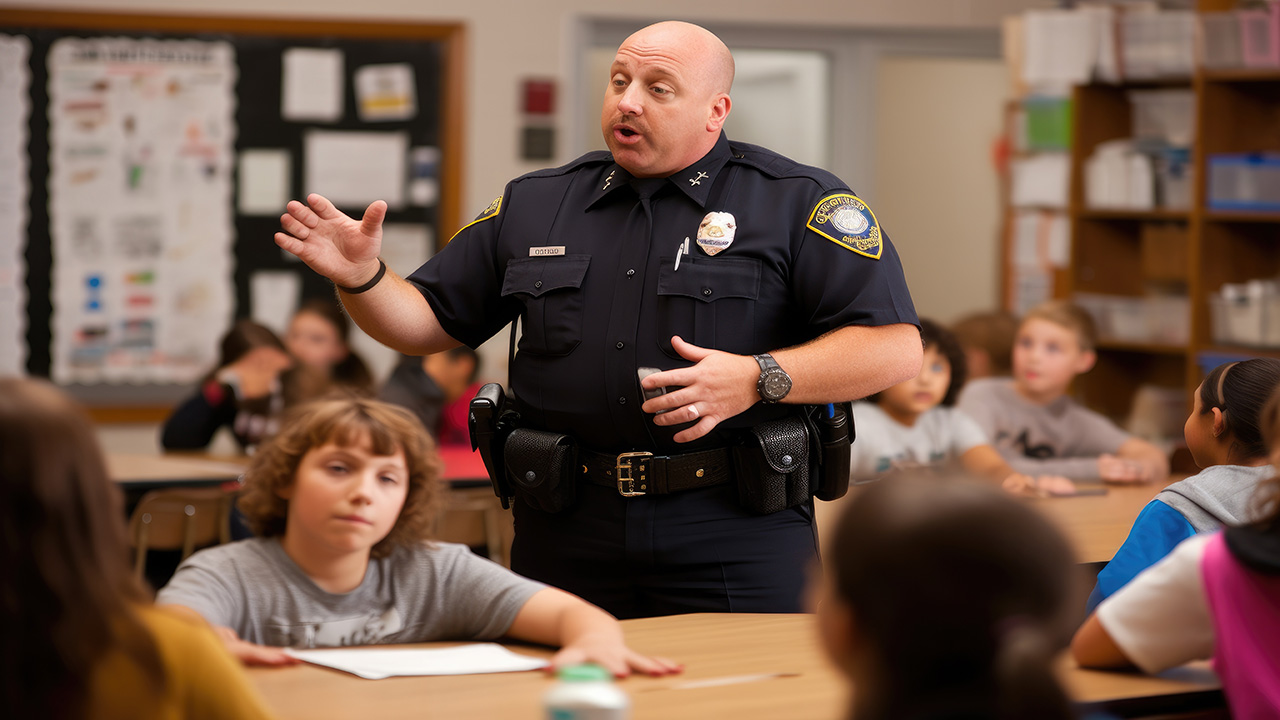

Unraveling the Dynamics of School Policing: A Closer Look at Resource Officers and Armed Personnel
Navigating the intricate landscape of school policing poses a challenge, fueled by viral incidents and a perceived surge in violence. This exploration delves into the elusive role of school resource officers (SROs), their presence in educational settings, and the evolving dynamics of armed individuals contributing to school safety.
In deciphering the enigma of SROs, one encounters sworn law enforcement officers embedded in school settings, armed and endowed with arrest authority. Despite specialized training touted by the National Association of School Resource Officers (NASRO), the actual readiness of these officers remains obscured.
Beyond their traditional law enforcement role, SROs are purportedly tasked with mentorship and teaching. However, skepticism arises about the feasibility of officers successfully balancing these responsibilities. A survey reveals a discrepancy between SROs identifying with law enforcement and their significant investment of time in mentoring activities.
The numerical growth of SROs remains elusive, lacking a national database for precise tracking. Federal data suggest an upward trend, with a significant percentage of schools hosting an SRO weekly. The distribution of SROs across multiple campuses adds complexity to this statistical landscape.
The historical roots of school policing trace back to the 1990s, propelled by concerns over juvenile crime, federal funding initiatives, and the aftermath of the 1999 Columbine shooting. Recent legislative responses have expanded SRO presence from secondary to elementary schools.
School policing extends beyond SROs to encompass various armed individuals, including campus security officers, beat cops, and laypeople. State laws mandate SROs or “adequate police coverage,” broadening the spectrum of armed personnel contributing to school safety.
The selection process for SROs varies across districts, from limited involvement to active participation by central office administrators or principals. Memoranda of Understanding (MOUs) govern these arrangements, outlining officer selection, training, and duties, but their prevalence and specific details remain inconsistent.
Critics argue that SROs contribute to the ‘school-to-prison pipeline,’ emphasizing disparities in arrest rates for students of color. Empirical research highlights a consistent link between police presence in schools and disparate disciplinary outcomes, particularly affecting marginalized students.
Determining the impact of SROs on school safety is intricate. Recent studies hint at a decline in violent incidents, yet concerns linger about their efficacy in preventing school shootings. Preliminary evidence suggests potential drawbacks, such as an increase in firearm-related incidents.
Some districts respond to concerns by cutting funding to school police programs or removing SROs, but this does not eliminate police involvement. Law enforcement may still be called in for violent incidents or collaborate with schools through alternative arrangements.
Interpreting findings surrounding SROs poses a challenge for school leaders, questioning whether the safety benefits justify documented harms. The ongoing discourse grapples with the effectiveness of tweaks, including refined MOUs and increased district control, adding complexity to the sociological exploration of school policing.
Dig Deeper With Our Longreads
Newsletter Sign up to get our best longform features, investigations, and thought-provoking essays, in your inbox every Sunday.
The MEN was founded by John Huber in the fall of 2020. It was founded to provide a platform for expert opinion and commentary on current issues that directly or indirectly affect education. All opinions are valued and accepted providing they are expressed in a professional manner. The Maryland Education Network consists of Blogs, Videos, and other interaction among the K-12 community.









